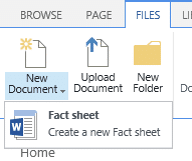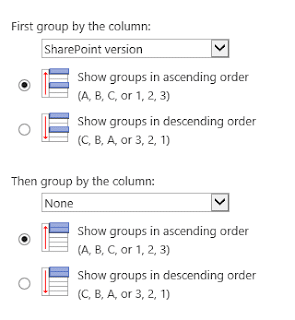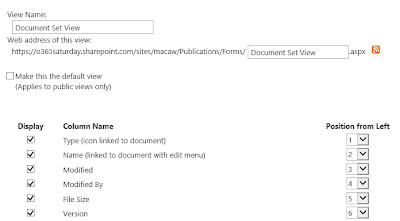Document Sets are awesome!
During my assignment at an asset manager in the Netherlands, I really started to appreciate the power of Document Sets in SharePoint. I never really was a big fan (not sure why exactly) and never used them. One of my colleagues from the Intranet Team showed me the benefits and now I think they rock! I recently wrote an article for the DIWUG E-Magazine where I also write about Document Sets. In this post I would like to show you an example of the use of Document Sets within my own team at Macaw. Let’s take a look!
Storing publications and presentations
The publications are grouped by SharePoint version. Each visitor can immediately search for the SharePoint version they are looking for and also get a glimpse at the author. Let’s create a new publication:
Every author has to attach metadata to the publication. This improves the Search results and every visitor gets all the details of the publication. After entering all the metadata the following screen appears:
This is what I love about Document Sets! The welcome page. You see a description and all the important metadata such as the URL of the publication. I hope you noticed a different view compared to the library, where the document sets are grouped by the SharePoint version. The content of the Document Sets has a different view and different metadata! Awesome! This is why I recommend using Document Sets instead of folders, you have a lot more flexibility and options. It really improves User Adoption of SharePoint and Document Libraries. So how do you recreate this solution? It’s really easy.
Content type and site columns
We start by creating a new Content Type based at the default Document Set Content Type:
We create new site columns or attach default site columns to provide the metadata of our Document Set. Create a new document library and attach the Document Set Content Type:
- Click on Library in the ribbon
- Click on Library Settings
- Click on Advanced Settings
- Select Yes to allow the management of Content Types
- Click on Ok.
The Document Set is now available in our library.
Document Set Settings
Allowed Content Types
Default Content
Shared Columns
Welcome Page Columns
Welcome Page View
To set a dedicated view for the Document Set we have to create a new view:
So how do we get this view to be the default view for the Document Set? By selecting it at theWelcome Page View option.
This is how Document Sets can benefit your business. I really hope you found this post useful and you can start working with Document Sets in your business.











